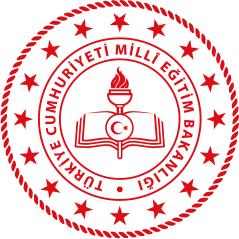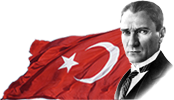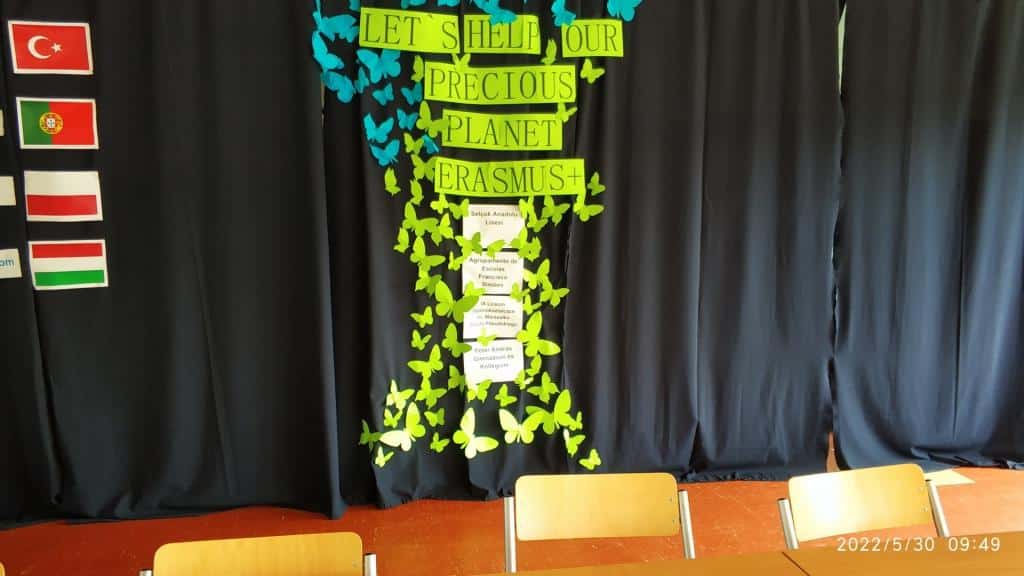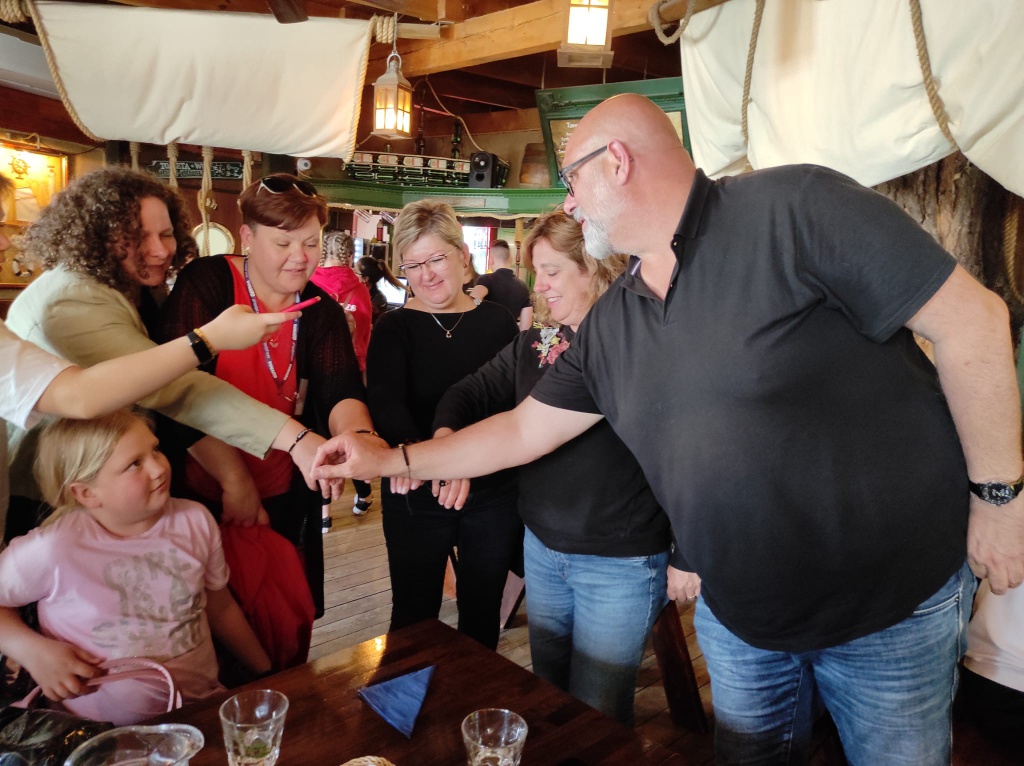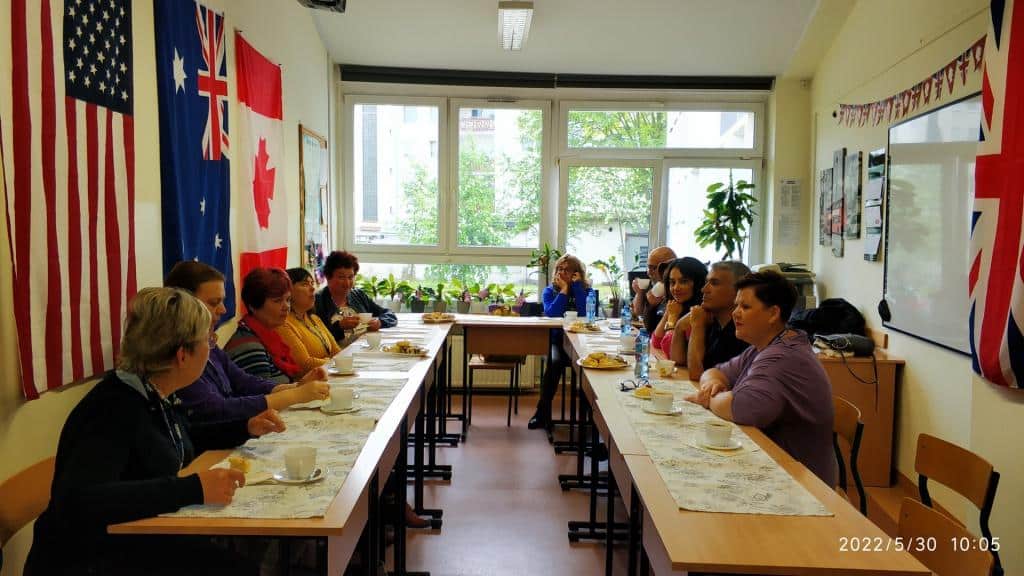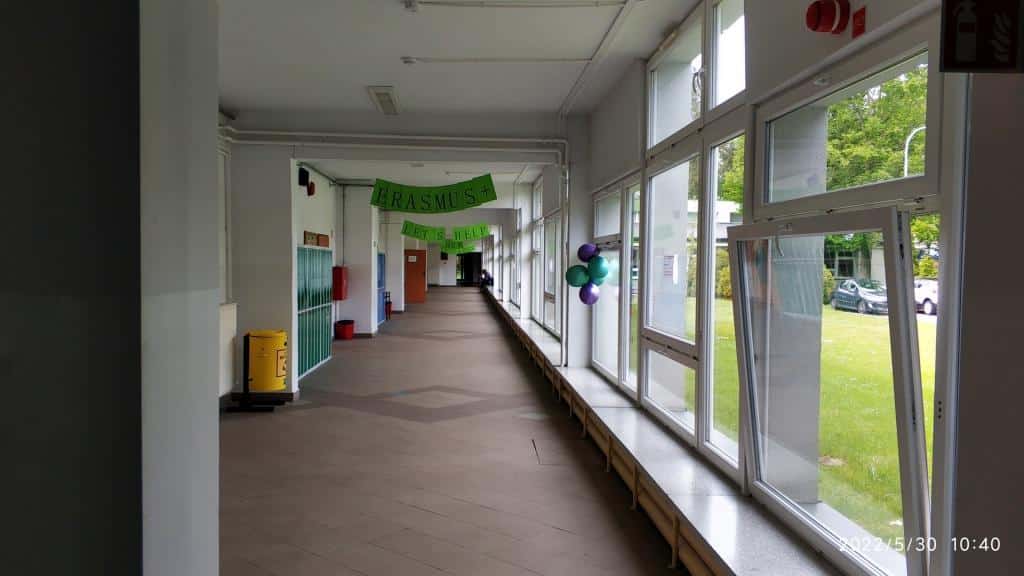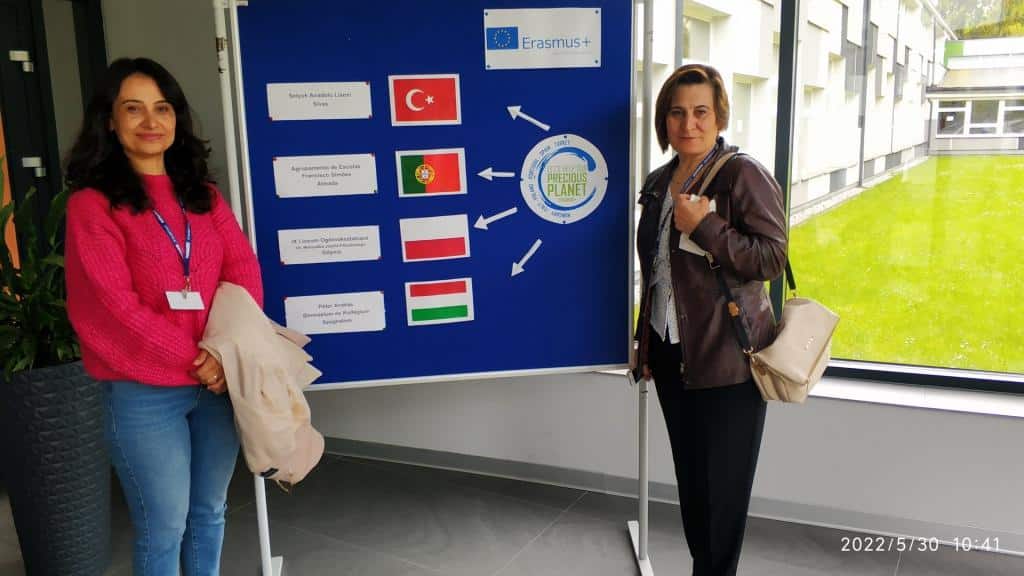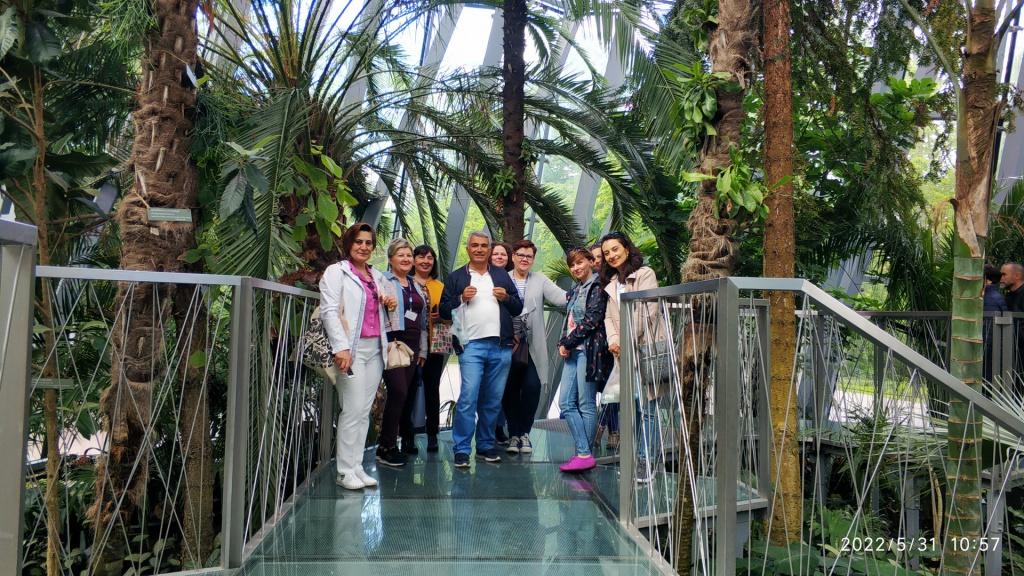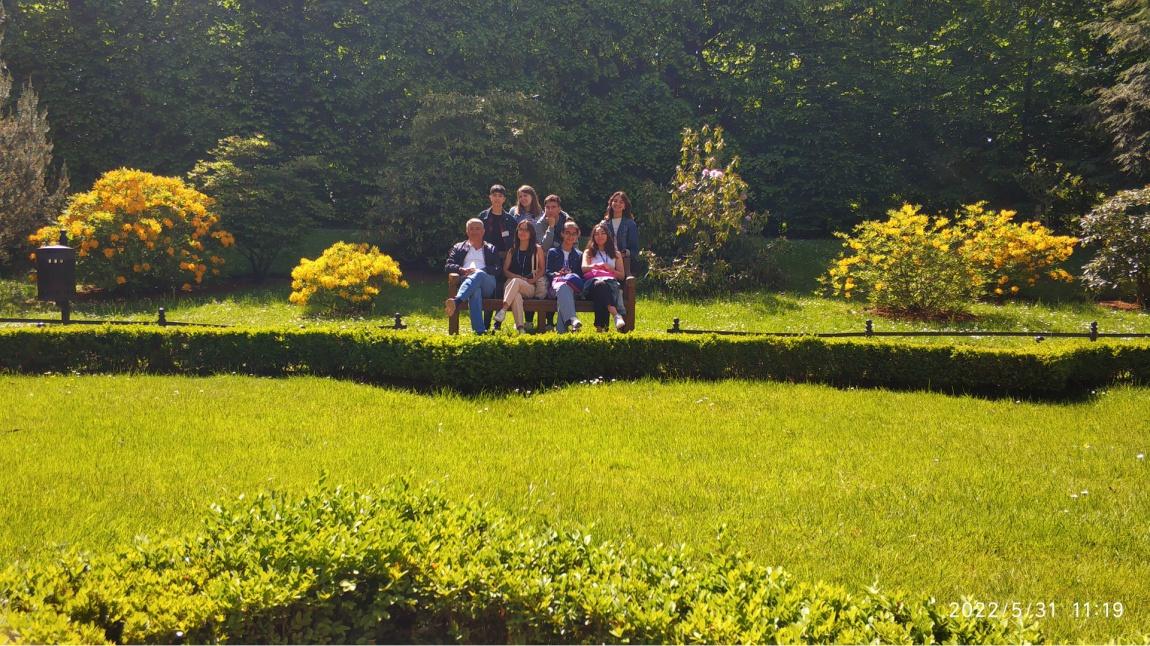
ERASMUS PLUS POLONYA HAREKETLİLİĞİ
[TR]
ERASMUS+ POLONYA HAREKETLİLİĞİ
Selçuk Anadolu Lisesi öğrencileri, Erasmus+ Okullar Arası Değişim Ortaklıkları (KA229) Projesi kapsamında İngilizce Öğretmeni Şadi ŞİMŞEK koordinatörlüğünde yürütülen "LET'S HELP OUR PRECIOUS PLANET/GÜZEL GEZEGENİMİZE YARDIM EDELİM" adlı proje ile ilgili çalışmaların yürütülmesi için 27.05.2022-04.06.2022 tarihleri arasında Polonya'nın Gydnia şehrine ziyarette bulundular. Çevre ve doğa bilinci oluşturmak, daha temiz, daha yeşil ve yaşanabilir bir dünya için öğrencilerin daha aktif rol almalarını sağlamak, Avrupa'nın farklı ülkelerinden öğrencilerin birlikte çalışmalarını, iş birliğini, karşılıklı öğrenmeyi ve deneyimlerin paylaşılmasını desteklemek amacıyla yürütülen projenin ortakları arasında Portekiz ve Macaristan da bulunmaktadır. Projenin ilk toplantısı Sivas'ta yapılmış, ardından sırasıyla Portekiz ve Macaristan'da çalışmalara devam edilmiştir.
27 Mayıs Cuma günü Sivas'tan İstanbul'a, 28 Mayıs Cumartesi günü de İstanbul'dan Polonya'nın başkenti ve en büyük şehri olan Varşova'ya hareket eden 15 kişilik grup, 29 Mayıs Pazar günü trenle Gydnia'ya ulaştı.
30 Mayıs Pazartesi günü Gydnia'da okul binasında yapılan koordinatörler toplantısıyla başlayan çalışmalar, öğrencilerin hava kirliliği ile ilgili açık hava atölye çalışmalarına katılmaları ile devam etti.
31 Mayıs Salı günü tren yolculuğu ile etkileyici mimarisiyle tarihi liman şehri Gdansk şehrine gidildi. İçerisinde göller, yürüyüş yolları, botanik bahçeleri, meşhur Oliwa Katedrali bulunan Oliwa Park ve Palmiye Evi gezisinin ardından rehber eşliğinde "Gdansk Eski Şehir" turu yapıldı.
1 Haziran Çarşamba günü Gdansk Üniversitesi Coğrafya ve Oşinografi Bölümü'nde "Atmosferik Kirlilik- Kirliliğin Nedenleri, Sonuçları ve Önlenmesi" konulu konferansa katılımın ardından ilginç mimarisiyle dikkat çeken, aynı zamanda bir eğitim, kültür ve araştırma merkezi olarak hizmet veren Gdansk "II. Dünya Savaşı Müzesi" gezildi.
2 Haziran Perşembe günü, Polonya'daki 23 millî parktan biri olan Leba Slowinski Millî Parkı'na gidildi. Park, UNESCO Dünya Biyosfer Rezervi olarak belirlenmiş, ormanları ve hareketli kum tepeleriyle ünlü. Kum tepelerinde ve Baltık Denizi kıyısında yapılan uzun yürüyüşün ardından Slowinski Millî Parkı'nın yanında, Leba Nehri'nin çıkışında yer alan küçük bir kasaba olan Leba'da mola verildi. Gün içinde Gdansk Amber Müzesi de ziyaret edilen yerler arasında yer aldı. Amberin (kehribar) nasıl oluştuğu, nasıl çıkarıldığı, özelliklerinin neler olduğu ve çağlar boyunca nasıl işlendiği öğrenildi. Günün sonunda düzenlenen törenle katılımcılara sertifikaları verildi.
3 Haziran Cuma günü Polonya'daki Ulusal Deniz Balıkçılık Araştırma Enstitüsü tarafından işletilen bir kamu akvaryumu ve deniz müzesi olan "Gdynia Akvaryumu" gezisinden sonra Baltık Denizi ve Baltık Denizi'nde yaşayan canlılar üzerine laboratuvar çalışması yapıldı. Daha sonra Gydnia'ya bağlı turistik bir kasaba olan Sopot'a hareket edildi. 515,5 metre ile Avrupa'nın en uzun ahşap iskelesine sahip kasabanın ana caddesi Monte Cassino'da yapılan yürüyüş Baltık Denizi sahilinde devam etti. Veda yemeğinden sonra Gydina'dan ayrılmak üzere trenle Varşova'ya hareket edildi.
Farklı ülkelerdeki öğrenci ve öğretmenlerle birlikte çalışma fırsatı sağlayarak yabancı dil kullanımına imkân veren, iletişim becerisi kazandıran; iş birliği, ekip çalışması, farklı kültürler kavramlarına vurgu yapan ERASMUS+ Okullar Arası Değişim Ortaklıkları (KA229) "LET'S HELP OUR PRECIOUS PLANET/GÜZEL GEZEGENİMİZE YARDIM EDELİM" projesi çalışmaları çevrim içi olarak devam edecek.
[EN]
THE FIRST PROJECT DAY (30 May 2022)
First to work on the extraordinary Erasmus+ project "Let's Help Our Precious Planet". Breakfast was already attended by our fifteen Turkish partners, which made the beautiful dining room of our hotel a place to exchange welcomes between Portuguese and Turkish. Turkish students and teachers are, as usual, very friendly and communicative. In a little while, the eighteen Hungarians will arrive and Willa Lubicz will be full with Erasmus partners.
After the meal, a short walk to the magnificent IX Liceum Ogólnokształcące w Gdyni, which welcomes us this week and which the Portuguese students fell in love with for several reasons, some of which were the existence of a dentist and a nurse and the calm and lack of noise on the school premises. After the reception given by the School Director and the teachers involved in the project, students from the four participating countries spent the morning in ice breaking activities; guided tours of the school; quizzes about videos related to the Environment; design of posters alluding to Air Pollution. The teachers met in Kasia's English classroom and worked on the project, having planned the week and the necessary activities to be carried out since this is the last mobility of this project.
Lunch took place in a restaurant that served us some pierogi that were divine. After lunch, travel by train to the center of Gdynia where the students engaged in a peddypaper activity while the teachers took a walk through the main points of the city: We went along cobbled Starowiejska street and Kościszko Square with the beautiful fountain; to the marine where we saw the amazing tall ships Dar Pomorza and Dar Młodzieży and the warship Błyskawica; we saw the Gdynia Aquarium that we are going to visit next Friday; and we went to the City Beach for a coffee at Contrast Café. After the quick rest we went up to Kamienna Góra to see the amazing view of Gdynia surroundings. Finally, a walk until a Greek restaurant where we had dinner and after that, train again to Gdynia Orlowo and to the hotel because tomorrow it will be a long day.
So far, everything is perfect!
THE SECOND PROJECT DAY ( 31 May 2022)
The day started out sunny, which led some intrepid participants to wear their shorts, a fact that continues to surprise the locals. Again, a very good breakfast because the day was going to be long and with only one sandwich on the way.
Departure by train towards Gdansk Oliwa, a train station that leaves us right next to the park with the same name – Oliwa Park. This beautiful Baroque Park has gardens, plants, flowers and beautiful lakes and a very interesting cathedral founded in 1578, agglomerating styles ranging from very late Gothic to later Baroque. The walk through the garden, guided by some Polish students, amazed us by the diversity of animal and plant species, but the morning undoubtedly had its high point with the organ concert that we attended in the aforementioned cathedral. Sublime moment that lifted the souls of everyone present to heaven.
After this visit, time to return to the train that took us to Gdansk where an enthusiastic guide was waiting for us to take us on a journey through the wonderful streets of the old city. The history of Gdansk runs through time, having been a city linked to several important events in our more and less recent history. Walking through its streets with buildings with colorful facades, transports us to other times and other stories.
Many kilometers were covered today and it remains to be said that the return was made, again, by train, having dinner passed without any problems. Now, some of us write the memories of the day; others stroll along the waterfront watching the sunset; others try to get some rest because tomorrow will be another very busy day.
So far, everything is perfect!
THE THIRD PROJECT DAY (1 June 2022)
After the, already highly praised, breakfast, time to walk to the train station to head straight to Gdynia and the Department of Oceanography and Geography of the University of Gdansk where we were welcomed and accompanied by Dr. Michalina Bielawska, from the Division of Marine Chemistry and Environmental Protection. The morning was duly occupied by a lecture and a workshop in the area of Atmospheric Pollution. Causes, consequences and prevention were the topics of this meeting and, in the end, through the work produced by the students and teachers present, we learned that the basic knowledge of those involved is well developed and that, through this training, much more has been consolidated.
After the training, time to take a short walk to the shore of the Baltic Sea and admire the Królowej Marysieńki Promenade, a pedestrian area that marries the forest on one side to the sea on the other.
After a well-deserved lunch, train to Gdansk to visit one of the most awaited moments of this trip: the World War II Museum. The Museum building has an overall area of 34,111 square meters. An area of over 5,000 square meters has been allocated to the main exhibition. This is designed to present the Second World War in a contemporary way, both from the perspective of the greater political events of that time but, above all, from the experience of ordinary people. The building was created by the Gdynia-based Kwadrat architectural studio. The seat of the museum faces the Motława River and is located on Wałowa Street in close proximity to the Radunia Canal and the historical Polish Post Office Building and consists of three major spheres, which symbolically represent the connection between the past, present and future. The most distinctive part of the building is the 40-metre-tall leaning tower with a glass façade, which houses a library, reading and conference rooms as well as cafes and restaurants with a view of the panorama of Gdansk.
It was a exciting and, at the same time, dramatic visit as we are confronted with the beginning of the War and its entire historical, social, cultural and economic path. Not even the rain, accompanied by thunder, that followed us to the doors of the Museum, took away some of the shine that we all anticipated. A memorable and unforgettable afternoon on this Children's Day.
Tomorrow, early dawn because the day will be very different...
So far, everything is perfect!
THE FOURTH PROJECT DAY (2 June 2022)
in Pomeranian Voivodeship region.
The day started earlier than usual because a bus was waiting for the group outside the school at 8:00. A helpful guide accompanied us throughout the day on the expedition that took place towards the North, even further to the North, so far north that it gave the sensation of being able to throw a stone to Swedish lands. Of course it was a pure illusion, but Sweden was just ahead, beyond the Baltic Sea and a land called Stenshamn seemed to be lurking for us.
But, first things first. The trip took approximately two hours to reach our morning destination, Słowiński National Park. This natural park, twelfth in a list of twenty-five across Poland, covers a 33-kilometre stretch of the Baltic coast near the town of Łeba, and includes a two-mile-wide belt of shallow coastal waters. The Site boasts a wide range of strikingly diverse habitats ranging from sand beaches, notable "moving dunes", lakes, mires, meadows and forests, and these and the transitional "ecotones" between them support a wealth of biodiversity. This place is visited annually by about 500,000 visitors who use the marked trails, viewing towers and educational trails to observe rare animals and plants in their natural habitats. Can you imagine climbing a dune almost forty meters high and seeing a huge lake on the left and the Baltic Sea on the right? It was a fantastic experience that we all truly enjoyed. After letting our eyes and lenses register the moment, we started a descent that took us to the beach. For a few kilometers, we walked along the beautiful and almost wild sands, which, unfortunately, bear the mark of the human being. As we like the idea that "if you leave the world a little better than you found it, you are already contributing to a change" we went for a walk and collected some of the rubbish we found – especially the inevitable "plastic" related, in most objects, with fishing activities. After that walk, it was time to return to the starting point, the park's reception, in electric vehicles that were greatly welcomed by most participants.
Back on the bus, we went to the second moment of the day, a visit to the town of Łeba (the "Ł" in Polish reads like the "w" in English and it sounds like those people who don't say the "l"). It is the main city in this region with many touristic offers and which is now starting to prepare itself to receive the thousands of visitors who pass through here every year in search of the natural paradise that the surroundings offer. Short walk along the main street, time for a coffee and shopping for some souvenirs, then we head to the Amber Museum – Muzeum Bursztynu. At first I feared that my favorite phrase "so far everything is perfect" might fall into this place, but after starting the guided tour, we realized that the person in charge of the museum knew perfectly the subject and managed to capture the attention of almost everyone about amber and its history. If we had more time, we would still be there analyzing the beautiful pieces that are part of the collection of this small, but very interesting, museum.
As the day in what concerns to food was frugal, we had to feed the body so we went to the last stage of the day, the Norowy Mol restaurant that would serve us dinner. It was very good, especially the mushroom soup which was exceptional. This restaurant offers a menu of traditional dishes from the region's cuisine and also has a small hotel that the owner very kindly took us to visit. And, as our Hungarian partners and friends leave tomorrow at lunchtime, this dinner was the official closing dinner of this mobility and this project with the delivery of certificates to all participants.
The day was approaching to the end, so it was time to return to Gdynia for a well-deserved bath and to clean the sand that still remained in everyone's socks and shoes.
Tomorrow, it will be the last day of this fantastic project, but I'm sure I'll have many things to tell!
And so far, everything is perfect!
THE FIFTH PROJECT DAY (3 June 2022)
in Trójmiasto lands.
Last day of this mobility and last, physical, day of our Erasmus+ project "Let's Help Our Precious Planet". This project started in 2019, with the first trip, just for teachers, in Sivas, Turkey, location of the project coordinator's school. In 2020 we were bombarded with Covid19 and everything was on hold. In 2021, second mobility in Portugal, this time with students. However, Spain and Italy, for reasons external to the project, decide to leave and only Turkey, Portugal, Hungary and Poland remained. The third mobility took place this year in Szeghalom, Hungary. There was a mobility to be done that had to add the two that disappeared: here, in Gdynia, in Poland. And so, the week went by with the responsibility of creating a dynamic that respected the project and allowed the development of knowledge and practices that could contribute to an effective improvement of our planet.
Let's go, then, to the summary of the last day.
Departure, after breakfast, to the center of Gdynia to visit the city's Aquarium, open since 1971. The Gdynia Aquarium is part of the National Marine Fisheries Research Institute. Their mission is to present aquatic species from around the world, as well as to transfer knowledge about the aquatic environment. The Gdynia Aquarium is a rather unusual zoological garden, in which all animals are bound to the aquatic environment, and in which the entire surface is enclosed in one building. The first part of the visit consisted of a workshop on the main features of the Baltic Sea and the species that inhabit it. Step by step, we observed under the microscope different species of fauna and flora that are characteristic of the place. After work, time to visit the Aquarium and the species and habitats that exist there.
After a morning dedicated to getting to know the Baltic Sea and the species residing in the Aquarium, time for lunch and the first farewell. Our Hungarian partners and friends had to leave on their way home.
After this first difficult moment of the day, the rest headed for Sopot, the third city of the "Trójmiasto" mentioned at the beginning. This group of three cities includes Gdansk (the city of culture); Sopot (the city of fun) and Gdynia (the city of economy). Sopot is a popular spa resort with tourists, known for having the longest wooden pier in Europe, the Molo, at 515.5 meters, from which you can see the bay of Gdansk. It is considered the best nightlife center in the region, housing several bars and clubs that remain open all night. The name Sopot derives from an ancient Slavic word meaning "spring". Time to walk around a bit, eat an ice cream and see the pier from "outside" because you have to pay a ticket to access it and the group preferred to bet everything on ice cream. After these moments, a less courageous group of participants returned to the hotel by bus while another group of intrepid adventurers decided to take a walk of more than five kilometers along the beach between Sopor pier and Gdynia Orlowo pier. I can assure you that the strongest group made up of three Portuguese (Américo, Tomás and Rodrigo) and a young Pole (Maciek) won the distance in forty-two minutes.
There is not much more to tell, apart from dinner and the departure of our Turkish friends, who have a train ahead of them to Gdynia; another to Warsaw; a plane to Istanbul; and finally, another plane to Sivas.
Farewells are always difficult, but the most important thing was left in the air: extraordinary Polish organization by our friend Kasia, assisted by the fantastic Anya and Cristina; and a feeling of "until one of these days". Never a goodbye! Friendships, challenges, commitments, complicities are established that will hardly be erased no matter time or distance.
Tomorrow morning, it's the Portuguese's turn to leave. This journey, which reminds the John Hughes film "Planes, Trains and Automobiles", was also made of cars, planes, trains, boats, buses, moving walkways, electric vehicles.
Around 22:00 tomorrow, we hope to deliver our students to their families, wishing that this trip will last in the memory of all participants for a lifetime.
And so far, everything is perfect!
Eighth and final day.
In a nutshell, the last day was spent on the return trip: by bus to the center of Gdynia; by train to Gdansk airport; by plane to Munich; and, by plane, again, to Lisbon.
I could end this week's chronicle here. But I could also write many pages about the last day. I'll stay in the middle and write just a few lines.
All teachers are proud of most of their students. I and, I'm sure, my colleague Cristina, a great friend and companion of these crazy things we get into, we think our students are the best in the world! No doubt! There may be very similar ones, but of this caliber, only ours! Eight days of total dedication to the project, of enormous and constant joy, of continuous good mood, of enormous education and civility, of respect for others and their cultures. Eight days of mutual trust, collaboration, work, involvement. Always on time, always attentive, always available, always "smelling nice". When we arrived at Lisbon airport (I can confirm that it must be one of the worst in the world!!!) the families were waiting for us with open arms and hearts full of things they didn't see, but they know that happened. And it's so good when we feel the family members grateful for the work that teachers do for their youngsters... Not that we expect thanks, but it tastes good, you know. And, we can understand the quality of these students, too, for what their families are.
This mobility is finished and this project is coming to an end. Now, there is still some reporting and final balance work left, but these students have already made us promise that we will try to arrange a new project for next year. Let's try because we know that with them everything is lighter, brighter, more beautiful.
And now, in the safety of each one's home, I can say, everything was perfect!
